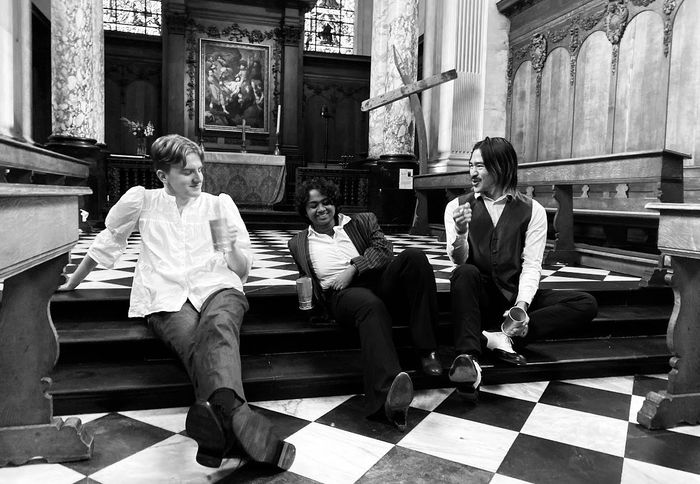The unsung brilliance of Cambridge theatre’s lighting crews
Bethinn Feely explores the lighting capability of various theatres across Cambridge, and the power of the lighting crew to make or break a show

The lights go down, and a hush runs through the audience. The play is about to start. Our attention is drawn to the actors on stage. You might expect your eyes to follow the standout performances and the choreography, even perhaps sparing a second for the sets and the music.
But, as someone new to the Cambridge theatre scene, what I did not expect to capture so much of my attention was the lighting crew. I expected to be impressed by the writing and directing capability, the multitude of venues and the calibre of acting. What I was naïve to how impressed I would be by the lighting capability of Cambridge theatres and the skill of lighting production teams across the student theatre scene.
“I was naïve to how impressed I would be by the lighting capability of Cambridge theatres”
The people who dictate where our eyes wander, who instruct us about where to pay our attention - the lighting crew - whose job it is to point attention away from themselves, inevitably often go unnoticed. They affect how we experience a play; we view the performance through the lens of the lights shining on the stage. But their power extends far past drawing the audience’s focus to a particular performer. It shows that lighting possesses an unsung power that shapes the atmosphere. A realist play can be shaped by the warm or ‘natural’ lighting suggestive of the sun, whilst a dramatic psychological play can have its intensity multiplied by quick flashes of bright lights.
Two shows I watched recently - Folie Circulaire, produced by the Pembroke players and The Backups (the Fresher’s musical) at the ADC - demonstrated the integrity of lighting to a play. Both used coloured lights, often flicking between different colours for different emotions. The contrasting-coloured lights amplified the conflict and tension between characters or at the pinnacle moments of the plot. Without the drama of the lighting, the plays would have felt flat - the characters less alive, the drama less piquant.
This isn’t to say that every play needs ultra-dramatic lights flitting between colours every five seconds. Another play at the Corpus Playroom - Between Friends - benefitted from the consistent warm-toned lighting which reflected the naturalism of the plot and dialogue. But even here, the lights formed a soft glow that encompassed the characters, drawing the audience’s eye unerringly, that heightened the play’s absorbing intimacy.
This is to say, lighting can make or break a show. It works unconsciously, the audience can remain unaware of the subtle influences the lighting exercises on their experience. The order of when the lights change, the colours that they change to - these aspects might not be as retrievably memorable as moments in a plot. Yet, without these lighting changes, many-a-play would become less enthralling. Whether dramatic and hyper-colourful or minimal and utilitarian - the lighting directors are integral to shaping a play’s atmosphere and its success at translating its message to its audience.
“It works unconsciously, the audience can remain unaware of the subtle influences the lighting exercises on their experience”
Another aspect of the Cambridge theatre scene that doesn’t always get the recognition it deserves is the lighting capability of the various venues across Cambridge. Lighting plays requires the correct rigging, enough electrical sockets, and lighting software, all of which require the venue to be capable of meeting the artistic goals of the director or writer. Here the Cambridge theatre scene glows. The ADC and Pembroke cellars, alongside many others, provide multicoloured lights – all useable simultaneously, whilst the strong (admittedly sometimes too strong) spotlights of the ADC would be sorely missed if the theatre lacked that capability. The venues across Cambridge allow for about as many lighting styles as a lighting director could desire.
Writers and directors make the most of the lighting capability in Cambridge, but the people who carry out these wishes, who bring them to shining reality and fit a writer or director’s request to the capability of the venue lighting crews take the credit. Without these people in the shadows, Cambridge theatre scene would be flat, less impactful; they would literally lose their light.
This is a grateful ode to the lighting capability of the ADC and Pembroke Cellars, as well as the atmospheric spotlights of the Corpus Playroom. The lighting directors perhaps get a passing mention in the occasional Varsity review, and if they’re lucky a brief mention in the ensuing ‘what did you think of the show’ conversation audience members have on the way out of a play. But next time, spare a second to notice the work of the lighting crew.
 News / Candidates clash over Chancellorship25 April 2025
News / Candidates clash over Chancellorship25 April 2025 Music / The pipes are calling: the life of a Cambridge Organ Scholar25 April 2025
Music / The pipes are calling: the life of a Cambridge Organ Scholar25 April 2025 Interviews / Dr Ally Louks on going viral for all the wrong reasons25 April 2025
Interviews / Dr Ally Louks on going viral for all the wrong reasons25 April 2025 News / Cambridge professor paid over $1 million for FBI intel since 199125 April 2025
News / Cambridge professor paid over $1 million for FBI intel since 199125 April 2025 Arts / Plays and playing truant: Stephen Fry’s Cambridge25 April 2025
Arts / Plays and playing truant: Stephen Fry’s Cambridge25 April 2025






